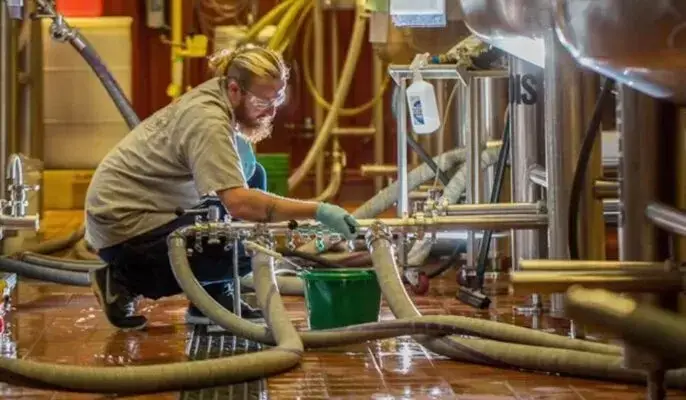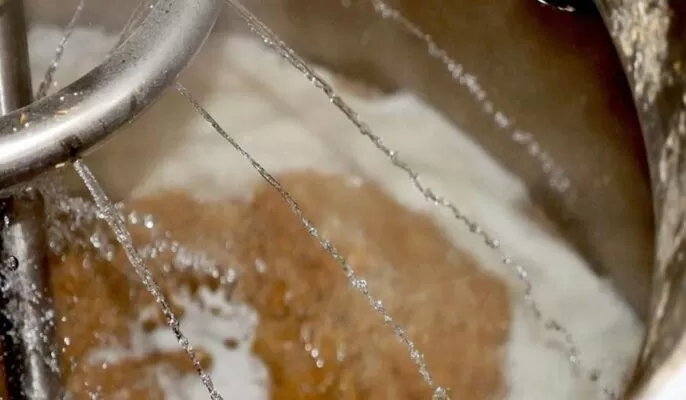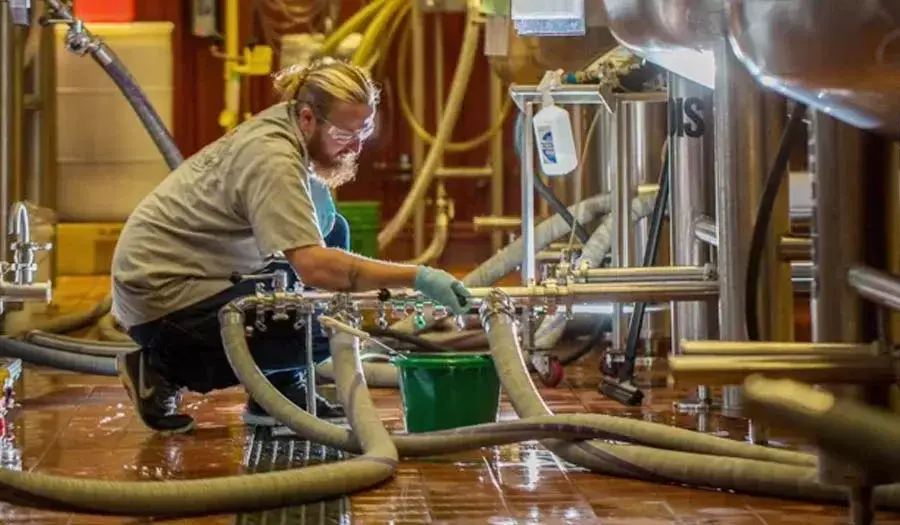Wastewater from breweries is a given. The brewing process produces alcohol, sugar, and protein, which all end up in the wastewater. If nutrient-rich brewery wastewater is discharged without proper treatment, it can disturb natural ecosystems. The beer industry is the most traditional industry that produces alcoholic beverages. Beer is approximately 95% water, especially during the brewing and bottling process.
Brewery wastewater generation
The production of beer requires great attention to hygiene and cleanliness, as beer is a particularly sensitive food. During the brewing process, foreign bacteria or yeast may settle into the mash, rendering the beer unusable. The use of wash water is a critical part of maintaining brewery hygiene. Depending on the level of industrialization of the brewery, 3.5 to 6 liters of water are used to produce one liter of beer.
Wastewater is generated from four sources: cleaning of brewing equipment and production buildings, as well as bottle cleaning and pipe cleaning. The cleaning of bottles and brewing equipment such as kettles, pans or storage tanks generates most of the wastewater. Sugar, dyes, hop resins, chaff and cleaning chemicals are the main substances mixed into beer wastewater.

Hazards caused by brewery wastewater
Wastewater generated by breweries requires treatment because the wastewater itself does not meet discharge regulatory standards. This treatment is often time-consuming and expensive due to the high levels of oxygen required to offset the high levels of BOD (Biological Oxygen Demand) required to aerate and clarify the water.
Another potential hazard of beer wastewater is the potential for corrosion due to its natural acidity. Brewery wastewater produces hydrogen sulfide gas, which when mixed with water vapor produces sulfuric acid. This acid can corrode processing vessels made of concrete or mild steel, causing further equipment delays and depreciation over time.
Additionally, the acidity of brewery wastewater can fluctuate depending on the activity of the brewery and the products produced. While the pH of this wastewater is low, at certain times the pH can rise, making the potential for solids sedimentation higher, thus increasing the potential amount of sludge that needs to be removed during treatment.
Brewery wastewater categories
Beer wastewater is divided into three categories: process water, cooling water and domestic wastewater. Clean water is produced in different regions, which is why it can carry different types of contaminants.
Process water
This is wastewater produced during the beer production process. It comes from the cleaning of boilers, pans and tanks, either by CIP processes or using high pressure, or from the cleaning of bottles, which are automated, and the cleaning of all pipes and production facilities. This type of wastewater often contains high concentrations of organic matter, nitrogen, phosphorus and cleaning chemicals.
Cooling water
Chilling wort is a key component in beer production. Since the hops need to be boiled for several hours and the yeast ferments at a temperature of 8 to 22°C, and these two process steps occur in succession, the wort must be cooled to the optimal fermentation temperature. The cooling water used in this process usually contains few organic contaminants but may contain some concentration of metals.
Drinking water
Domestic sewage is produced by toilets, wash basins and showers. Sewage is often biodegradable and may contain residues of detergents or soaps.
Main characteristics of brewery wastewater
- Low pH
- High sugar and alcohol content
- TSS level is high
- COD/BOD levels are high
To cut these wastewaters, different environmental and socioeconomic criteria can be considered when deciding on a wastewater treatment plant for the beer industry. One can choose a process that can cope with large fluctuations in organic load and wastewater characteristics and ensure the lowest possible operating costs.

Brewery wastewater treatment methods
Physical therapy
Physical methods are treatment methods that use physical force to remove contaminants. Since brewery wastewater contains grains such as barley, this method is ideal for removing coarse solid ice scale. This is a passive process, like sedimentation, which allows suspended contaminants to settle or float to the top. This approach often results in incomplete removal or separation of contaminants.
Chemical treatment
Chemicals are added to wastewater to remove contaminants from it. Chemical pretreatment includes pH change, coagulation and flocculation. Acidity or alkalinity can affect the environment and wastewater treatment systems. In this method, the pH needs to be maintained between 6 and 9 to protect healthy organisms. Coagulation and flocculation are physicochemical processes used to remove colloidal substances or colors from water and wastewater. So, pH change and flocculation are the most common methods used in breweries to remove toxic substances and colloidal impurities.
Biological treatment
After beer wastewater has been and treated, more biological treatment can be performed. Biological treatment processes convert biodegradable organic pollutants present in wastewater. Brewery wastewater contains chemical and microbial contaminants, and biological processes are one of the most preferred methods for removing these contaminants.
Environmental impact of brewery wastewater
If not treated , brewery wastewater can have a significant impact on the environment. If brewery wastewater is discharged into rivers or lakes without treatment, it can lead to overfertilization. The result can be an exponential growth of algae, resulting in less oxygen in the water. This can have a negative impact on fish populations in water bodies. First, this will have a strong negative impact on the nearest receiving water body and groundwater in the vicinity of the brewery.





Hello! Ι just would like to gіve you a huge thumЬs
up for your gгeat information you have got right here on this post.
Ι will be coming bаck to your web site for more
ѕoon.